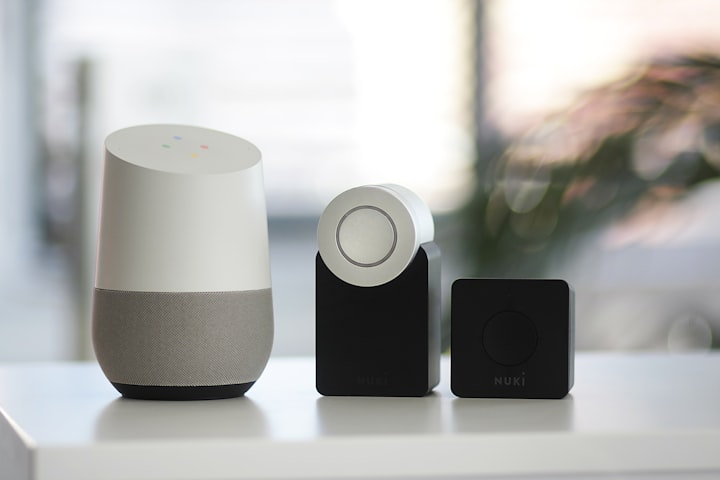Can using gadgets damage your eyes?
Are you worried about the harmful effects of gadgets on your eyes?

You turned on the TV and flipped it to the one show that was always your go-to: Friends. That episode you were waiting for was airing and you couldn't wait. “Come on already…” you said to yourself, as you made yourself comfortable on the couch. At this point, the popcorn wouldn't even be popped yet since you were excited, and to expect popcorn at this point would be strange.
After a short minute of commercial breaks and set up for the show, the characters finally appeared on screen. You started bobbing your head up and down with excitement as that catchy tune started playing in the background. You get so into watching this episode that it's almost as if you're right there with them (you are right there with them).
You notice a slight blurriness in your vision but just assume it's because they had to do a little editing here or there to make sure they got everything right (because sometimes they have to reshoot scenes just because of small changes which makes sense).
The blue light from gadgets can disrupt your sleep.
Doctors are starting to express concern about the possible long-term effects of using gadgets and computers. The blue light from gadgets can disrupt your sleep. Some people will also find that they get dry eyes, which can be uncomfortable and may need treatment. If you sit in front of a computer all day, you might also find that your eyes feel tired, sore or strained at the end of each day.
There is some evidence that using screens too much could raise the risk of developing eye problems such as myopia (short-sightedness) and cataracts. There is also some evidence linking long-term use of digital devices with the development of dry eye syndrome - although it's not clear if this is just because people tend to blink less when they're concentrating on an electronic screen.
Gadgets can strain your eyes for several reasons.
Can gadgets damage your eyes? Gadgets can strain your eyes for several reasons. They can cause eye strain and headaches, and they can also cause dry eyes. Eye strain is a common problem associated with the use of computers, smartphones and other electronic devices. It occurs when you spend too much time focusing on something that's close up, such as a computer screen or smartphone.
Eye strain symptoms include: blurred vision; dry, gritty or watery eyes; feeling like there's something in your eye; headaches; and tiredness.
Eye strain can happen with any age group.
You need to protect your eyes when they are doing a lot of work. This is especially true if you're staring at a screen for long periods of time. But what about the damage that can happen when you're not looking at the screen? We've all heard that too much sun can damage our eyes, but how about something we use every day: gadgets? The short answer is yes, gadgets can do damage to your eyes.
There are two main types of eye strain: Near-point stress - this is when you look at something close up for a long time, like reading a book or using your phone on the train. Near-point stress causes eyestrain and headaches and can leave you with blurred vision afterwards. Computer vision syndrome (CVS) - this is caused by spending too long looking at computer screens, whether they are laptops or tablets.
Staring at screens also causes blurred vision and headaches after prolonged use.
You have to take steps to reduce eye strain.
The short answer is yes, gadget usage can cause eye strain and fatigue. If you're experiencing eye discomfort after using your device, stop and take a break. The reason for this is that the eyes are not meant to focus on small objects for extended periods of time. The eyelids have an important function in helping to focus the eyes.
When we stare at something for a long time, the eyelid muscles become fatigued and unable to do their job properly. This leads to eye strain and fatigue. There are three main types of eye strain: Visual-motor fatigue - occurs when you're doing fine motor tasks such as reading or writing with pen and paper or typing on a keyboard.
Visual-cognitive fatigue - occurs when you're performing cognitive tasks such as focusing on something while trying to remember other things at the same time (multitasking). Eye muscle overuse - occurs when you're focusing on something close up for too long without blinking or moving your eyes around (staring).
In A Word...
In short, yes. The average person spends 5 hours on a smartphone, and most of us don't even blink. It's just not natural to be staring at a computer all day. The key is to remember to blink while you're in front of a screen – push yourself to do it every minute or two.
Also, the longer you look at the screen, the more frequently you need to blink.
About the Creator
Claudie Delafosse
📰Hi, I'm Claudie and I write about phones, tech, fashion and more. My work has been featured in Mashable, CNET, Gadgette and more! I live in London 🇬🇧 and I love to travel 🌎






Comments (1)
Claudie, your article was an eye-opener (pun intended)! Turns out there's more to screens than meets the eye - gadgets can actually cause some serious damage to our peepers. It's a good thing I read this article before my eyes staged a protest. Thanks for the enlightening read, Claudie!